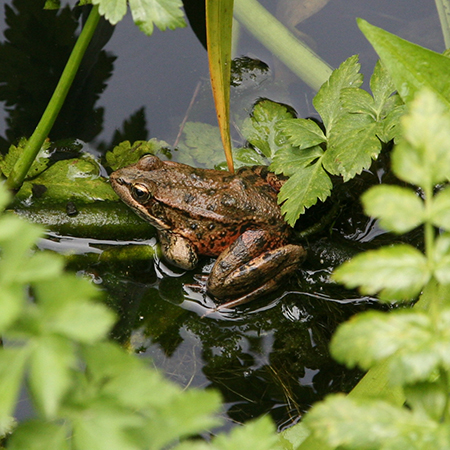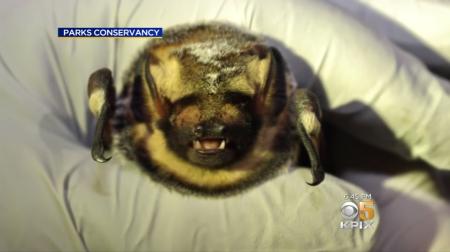Why Was This Indicator Chosen?
Mt. Tam is part of a core area identified by the U.S. Fish and Wildlife Service (USFWS) for the recovery of the California red-legged frog (Rana draytonii), which was listed as federally threatened in 1996. Within the One Tam area of focus, they are known to live at Muir Beach and in the Olema Creek Watershed. We do not have enough data to know the current status of the Olema Creek population; however, California red-legged frog numbers at Muir Beach have increased thanks to recent stream restoration and breeding pond creation, as well as the reintroduction of egg masses into those ponds.
What is Healthy?
As recommended by USFWS recovery plan (2002), the goal is to have the long-term population trend of California red-legged frogs unchanged or increasing. Additionally, there would be no non-native predators within two miles of California red-legged frog breeding sites.
What Are the Biggest Threats?
- Predation and competition from invasive species such as fish and non-native American bullfrogs (Lithobates catesbeianus)
- Habitat loss, including historic impacts from creek diversions, agriculture, and development
- Chytrid fungus (Batrachochytrium dendrobatidis), which has caused worldwide amphibian population declines, though so far does not seem to be affecting California red-legged frogs on Mt. Tam
- Warmer, drier conditions and more intense and frequent El Niño events predicted with climate change
What is The Current Condition?
The overall condition is Good, as monitoring indicates that California red-legged frogs are found in suitable breeding habitats in the Redwood Creek Watershed; however, there is only sparse data for the Olema Creek Watershed. The number of California red-legged frog egg masses are also increasing at Muir Beach thanks to recent habitat restoration and reintroduction efforts. There are no non-native predators in California red-legged frog breeding sites within Redwood Creek Watershed, but they are found in potential breeding sites in the Olema Creek Watershed.
What is the Current Trend?
The trends for breeding site occupancy and egg mass numbers are No Change for Redwood Creek, and Unknown for Olema Creek.
How Sure Are We?
Our overall confidence is Moderate because it is High for Redwood Creek but Low for Olema Creek based on varying levels of available data. California red-legged frog egg masses are large (fist-sized) and relatively easy to find and document in areas where they are surveyed.
What is This Assessment Based On?
The National Park Service and U.S. Geological Survey have collected sporadic data on breeding California red-legged frog populations in the Olema Valley and Bolinas Lagoon, and conducted consistent annual egg mass surveys and non-breeding season surveys for larvae, juveniles, and adults in the Redwood Creek Watershed since 2002 (Fong et al., 2010).
What Don’t We Know?
Key information gaps include:
- The effects of climate change on the drying of breeding pond habitats
- Population variables including factors affecting the abundance (e.g., survival, recruitment)
- Breeding surveys in streams similar to those we have for ponds
- Monitoring in the Olema Creek Watershed



